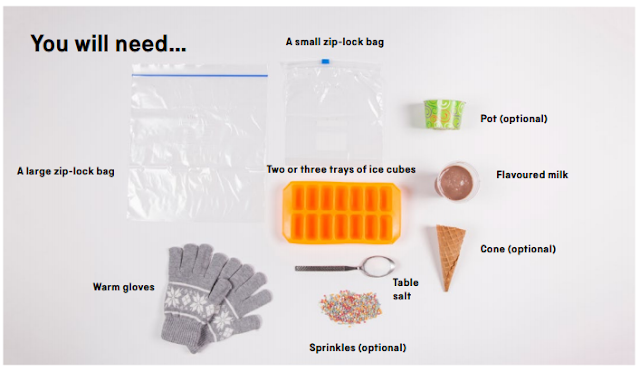Instant Ice Cream - Properties and changes of materials
Ice cream is basically droplets of fat from milk suspended in millions of tiny crystals of ice, fluffed up with tiny pockets of air.
This activity shows you how to make the right mixture, then make it cold enough to create those ice crystals without the aid of a freezer. It also reveals how salt and ice make a chilling combination.
What’s the
science?
Pure water freezes at 0 degrees Celsius. Add salt and the
freezing point drops by a few degrees. When you add salt to
the ice in the outer bag, the ice (at 0°C) is now above its freezing
point – so it begins to melt. Melting requires energy, and in this
case that energy comes from the flavoured milk mixture in the
inner bag. Ice crystals start to grow in-between the tiny globules
of fat in the milk and bubbles of air, causing the milk to freeze
and change state from a liquid to a solid.
Believe it or not, you can make
ice cream without a freezer.
Think and talk about…
- What do you see happening to the ingredients?
- What do you think the salt is doing?
- How could you find out more?
- How does the finished product compare with shop-bought ice cream?
Investigate…
- Can you make the ice cream freeze faster?
- Try altering the amount of salt or how much you shake the mixture.
- Try different ingredients – do they behave in the same way?







Hello everyone!
ReplyDeleteI'm glad you've found the comment section. This is the perfect place to ask questions about the learning tasks.